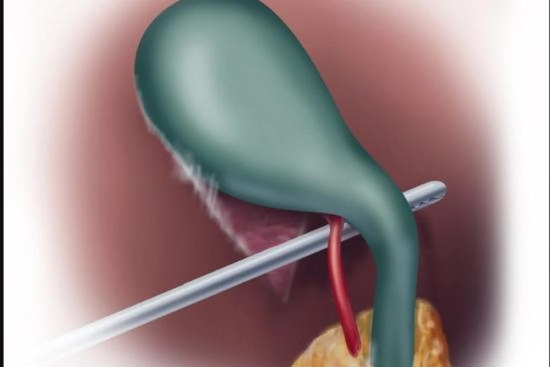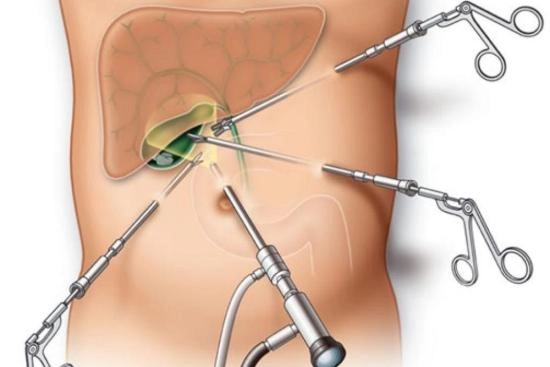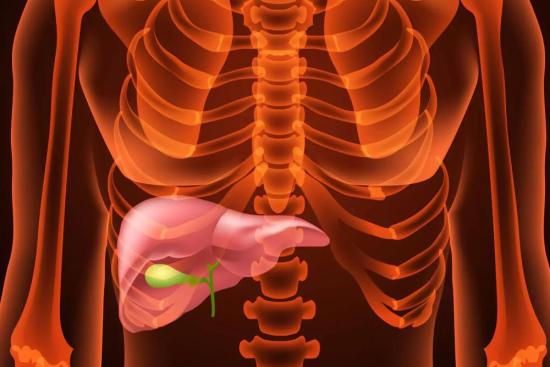Located below the liver, the gallbladder is a small, pear-shaped organ that stores bile, a fluid produced by the liver to help digest fats.
When stones block its duct, an inflammation called cholecystitis can occur.
To relieve this inflammation, doctors usually recommend a cholecystectomy to remove the gallbladder.
- People suffering from gallstones.
- Between 30 and 60 minutes.
- Hospitalization of 1 to 2 days.
- 10 days to 3 weeks off work.
Cost of cholecystitis surgery in Turkey
The cost of cholecystitis surgery in Turkey depends on several factors:
- The type of surgery: Laparoscopic cholecystectomy is generally more expensive than open cholecystectomy.
- Hospital and surgeon: Prices may vary from hospital to hospital and surgeon to surgeon.
- Anesthesia: The type of anesthesia used can also affect the cost of the operation.
- Length of hospital stay: The length of your hospital stay after surgery can also affect the overall cost.
However, in general, you can expect to pay between 1,500 and 3,000 USD for cholecystitis surgery in Turkey. This generally includes hospital fees, surgery fees, anesthesia fees and post-operative care.
Best Clinics with Verified Reviews

- Multispecialized hospital
- 7 operating rooms
- Capacity é of 170 beds

- Multispecialized hospital
- Hospital founded in 2007
- Very good reputation in ENT department
Causes of cholecystitis
The most common cause of cholecystitis is gallstones, which are hard stones that form in the gallbladder.
Other causes of cholecystitis include:
- Infections.
- Injuries to the gallbladder.
- Tumors
- Bile duct abnormalities.

Symptoms of cholecystitis
Cholecystitis typically presents as localized pain in the right hypochondrium that may radiate to the right shoulder. This pain may be severe and worsen after fatty meals.
Nausea, vomiting, fever and loss of appetite may also occur.
In more severe cases, yellowing of the skin and eyes (jaundice) may occur, indicating obstruction of the bile ducts.
Cholecystitis is usually diagnosed based on the patient's symptoms, a physical examination, and imaging tests such as ultrasound or computed tomography (CT).
Cholecystectomy: Treatment of cholecystitis in Turkey
Treatment of cholecystitis in Turkey involves removal of the gallbladder, a procedure known as cholecystectomy.
Cholecystectomy can be performed by open or laparoscopic surgery.
Coelioscopic cholecystectomy
A coelioscopic cholecystectomy is a minimally invasive technique performed under general anesthesia.
The surgeon makes several small incisions in the abdomen and inserts a camera and miniaturized instruments to remove the gallbladder.
Laparotomy cholecystectomy
Laparotomy cholecystectomy is a more invasive technique performed through a larger incision in the abdomen. It is usually reserved for more complex cases.

Convalescence and post-operative recovery
The average hospital stay after cholecystectomy is short, often limited to a day or two.
After cholecystectomy, most patients experience abdominal pain, tiredness, and nausea. These symptoms usually go away within a few days.
To promote a good recovery after a cholecystectomy, it is important to:
- Rest and follow your doctor's advice and instructions carefully.
- Avoid strenuous physical activity for the first few weeks.
- Start eating light, easily digestible foods and gradually return to your usual diet.
- Take any medicines prescribed by your doctor, which often include pain relievers and antibiotics.
Seek immediate medical attention if you have:
- Signs of infection, include fever, redness, swelling, or oozing from the incisions.
- Severe abdominal pain.
- Persistent nausea or vomiting.
Return to normal life after cholecystectomy
Cholecystectomy usually does not require any major changes in your daily routine. You can return to a balanced diet and your usual activities without restriction.
However, if you experience any pain or discomfort, don't hesitate to talk to your doctor. He or she will be able to guide you in the best way possible.
Share this page






